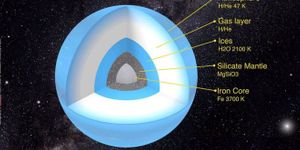Have you ever wondered if new languages are currently evolving? Sure, we have such emphasis now on the benefits for your brain of learning a new language, such emphasis on how we go about doing just that. But what about the actual science of inventing a new language? How are languages created, and are there any being created at this time in human history?
The development of Nicaraguan Sign Language (NSL) within the last several years is a prime example of how a need leads to innovation. It is well known that most countries have their own specific sign language that the deaf community uses to communicate. Sign languages even have intricacies such as regionalisms that develop because of particular contexts based within a community. However, up until the 1970’s, Nicaragua did not have an official sign language. This was largely due to the fact that most deaf people rarely encountered another person with their same hearing restrictions. Because of the stigma that plagued young deaf children, most children were kept at home or educated with children who had learning disabilities; they were not given the opportunity to interact and communicate with others like themselves. However after the Nicaraguan revolution, the new government tried to enhance deaf people’s lives. They brought deaf children from villages into the country’s capital, Managua, and instructors tried to teach them a pre-existing sign language in order to end their isolation. But, the program failed. It seemed the children didn’t want to learn a language that was being forced upon them. Especially when they had their own ideas of how to communicate.

It turns out that when all these children were brought together, they unknowingly and spontaneously created the best case study of evolving languages that science has in the modern day world. Judy Kegl from the University of Southern Maine came to Managua to study how the children were doing it.
“Language needs company, language needs a community, it needs some sort of a trigger, which is wanting to share information with each other,” said Kegl in an episode called “The Mind’s Big Bang” from the documentary “Evolution.” This is exactly what these newly united children from all over Nicaragua had - the trigger for linguistic invention. Those signs that individual children had been using in their homes in order to communicate with their families all of a sudden were exposed to other children. Rudimentary mimics became more complex, the language became faster, and throughout two generations, NSL’s syntax evolved. Kegl explains the importance of syntax, or the structure of a language for communication’s sake, that exists in NSL just as in all languages. “It is the ability to hierarchically organize information, to construct novel sentences, to tell stories, that allows us to prophesy, that allows us to lie.” Indeed, it was exactly these needs and desires - for example, of being able to convey a story to a friend - that jumpstarted the language’s birth.
It is particularly interesting to note the evolution of NSL. In the older generation of NSL students (the ones who initiated it), the language was much more ambiguous, specifically in terms of describing direction. The second generation of children - those who had learned from the parents as well as those who were able to interact consistently with other deaf children from an early age - continued the evolution of the language by developing more concrete signs to explain direction. In other words, they created signs for left, right, over, on, down, and other such prepositions. This breaking up of information into smaller units for clarity is a term called discreteness, and is just one aspect of how languages evolve.
NSL probes the ongoing nature vs nurture debate of how language develops in the brain as well as the question of how language affects thought. To read more about this topic, visit our sources below.
Sources:
Discover Magazine,
Hands and Voices,
PBS,
Nicaraguan Sign Language Projects, Inc.









